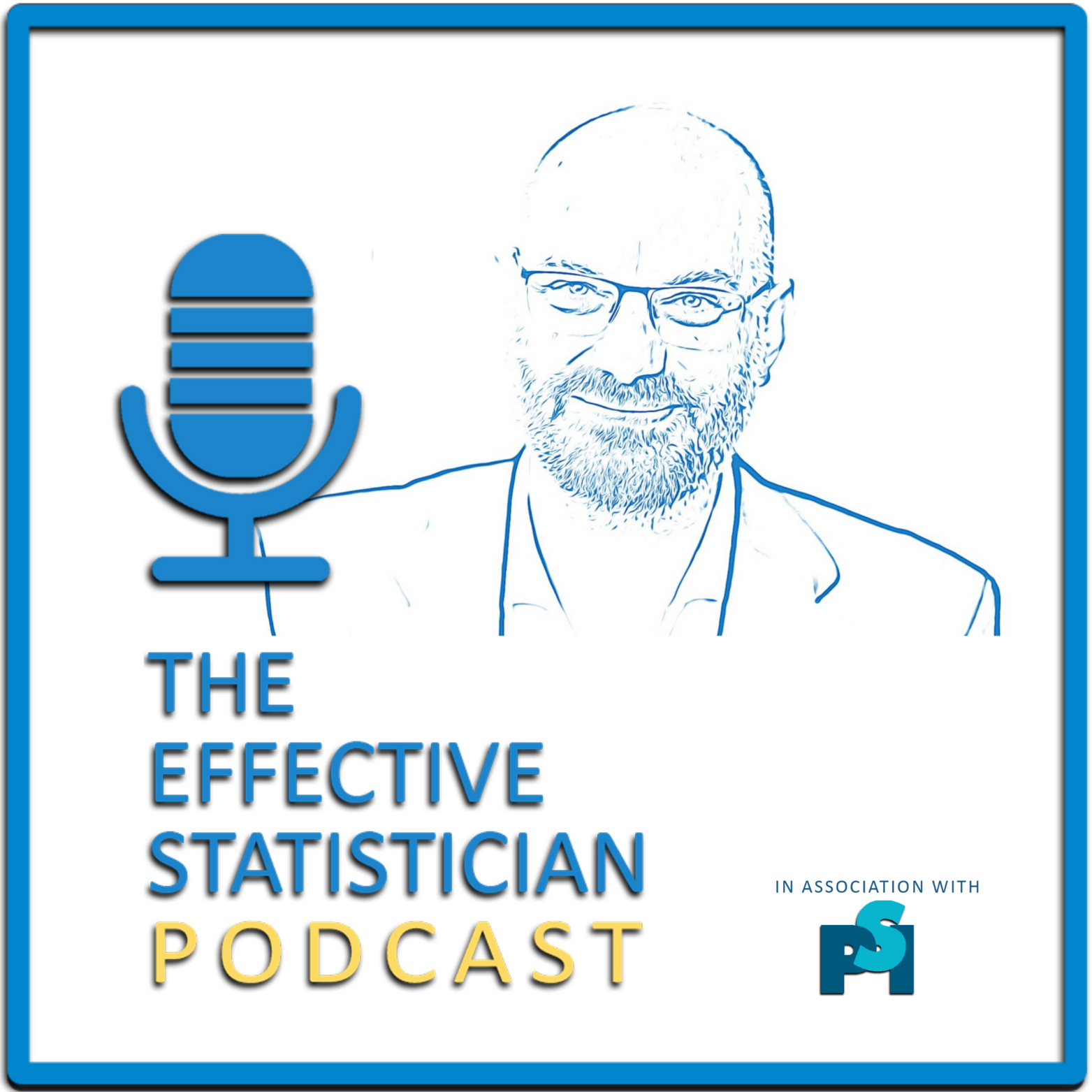

The Effective Statistician - in association with PSI
Alexander Schacht and Benjamin Piske, biometricians, statisticians and leaders in the pharma industry
The podcast from statisticians for statisticians to have a bigger impact at work. This podcast is set up in association with PSI - Promoting Statistical Insight. This podcast helps you to grow your leadership skills, learn about ongoing discussions in the scientific community, build you knowledge about the health sector and be more efficient at work. This podcast helps statisticians at all levels with and without management experience. It is targeted towards the health, but lots of topics will be important for the wider data scientists community.
Episodes
Mentioned books

Aug 23, 2021 • 17min
My experience as a statistician in a due diligence project
In this episode, Benjamin and I share about how we did it our way and discuss the following points:
What makes it very special?
Great experts to work withExposure to senior managementIntense work experienceSecret project - not even allowed to tell where you go to
How did it work for me?
Deep dive into the dataMeeting with the other companyInterviews with the expertsLooking into further materialDiscussions with the other expertsConclusions and recommendations
Listen to this episode and share this with your friends and colleagues!

Aug 23, 2021 • 38min
Opportunities offered by doing a placement year in the Pharmaceutical and Healthcare industry

Aug 17, 2021 • 24min
Fighting the fear at work
Join Sam and I while we discuss our experience and tips we have learned from other statisticians.
You will also learn about 7 Tips to Help You Overcome Your Fear of Public Speaking.
Start SmallPrepare ThoroughlyDon't Just Memorize the WordsAvoid Common BulletsReduce StressFind a Friend to Focus OnEngage the Audience
Reference articles from Sam we talk about:
https://www.linkedin.com/pulse/how-much-does-fear-impact-your-life-sam-gardner/
https://www.linkedin.com/pulse/right-wrong-kinds-fear-sam-gardner/
https://www.linkedin.com/pulse/motives-fear-sam-gardner/
Reference article by Lolly Daskal:
https://www.lollydaskal.com/leadership/what-to-do-when-you-are-afraid-of-your-leader/

Aug 9, 2021 • 21min
5 Steps to teaching statistics well
Today, Sam and I talk about the 5 steps to teaching stats and other types of content which are the following:
5 Steps to teaching statistics well:
The hookTell a storyTeaching pointsSummariseCall to action
Reference:
Stu McLaren
Listen to this episode and share this with your friends and colleagues!

Aug 9, 2021 • 43min
CALC Episode 6

Aug 2, 2021 • 27min
Mentor others to be mentored - Manatee Mentor
Interview with Lucy Setian
Join Lucy and I while we discuss more of the following points:
What is Manatee Mentor?Who is in your target audience?How do people find their mentees or mentors?What happens if you think your partner is not right for you?How do you interact with each other?How does it work with trading the time investment?How will the future look like for Manatee Mentor?
Reference: https://www.manatee-mentor.com/
Listen to this episode and share this with your friends and colleagues!

Jul 27, 2021 • 33min
The Data Project
Interview with Loris Marini
Listen while Loris, a man who views data through a human lens, and I talk about the following points:
What do you understand by Data Management Programs?What is their value?What does it take for them to be implemented?Where do organizations fail?
Reference:
The Data Project
- A conversational podcast to address the non-technical challenges in data and information management, learn from the experts, and establish a framework to reason about information in a business context.
Listen to this episode and share this with your friends and colleagues.

Jul 20, 2021 • 25min
Posters, flyers, papers and how you can use QR codes to enhance them
Interview with Irene de la Torre Arenas
Listen while we discuss the following points:
Connection between paper world and digital worldWhat is possible in the digital worldAdditional dataBackground informationExploration of data (interactivity)Augmented reality (show psoriasis on your skin)Animated chartsScrolly-tellingCapture information about the reader and show customized information (how would the results look like for me)Capture email and receive follow up informationConnect to a community
Listen to this episode and share this with your friends and colleagues!

Jul 13, 2021 • 43min
Taking on leadership roles outside of statistics
Interview with Shanthi Sethuraman
Join us while we discuss the following points:
What was her motivation for hiring peopleHow did she broaden her scope of work for the companyHow did she face resistance from people under herWhy did she move from one position to anotherHow to lead a team effectively

Jul 6, 2021 • 1h 1min
The analysis of adverse events done right - SAVVY
Interview with Kaspar Rufibach and Jan Beyersmann
Join us while we dive deep into the following points:
How do you solve the problem about varying follow-up times?What’s so special about the setup of the SAVVY collaboration?Where can people learn more about SAVVY?
References:
Stegherr et al (2021) Biom J https://doi.org/10.1002/bimj.201900347Preprint https://arxiv.org/abs/2001.05709One-sample case: https://arxiv.org/abs/2008.07883Two-sample case: https://arxiv.org/abs/2008.07881Example R code (markdown file): https://numbersman77.github.io/AEprobs/SAVVY_AEprobs.html"Special Issue:Analysis of Adverse Event Data" Van Walraven see also LetterRelated paper on: "On estimands and the analysis of adverse events in the presence of varying follow-up times within the benefit assessment of therapies"Working Savvy


